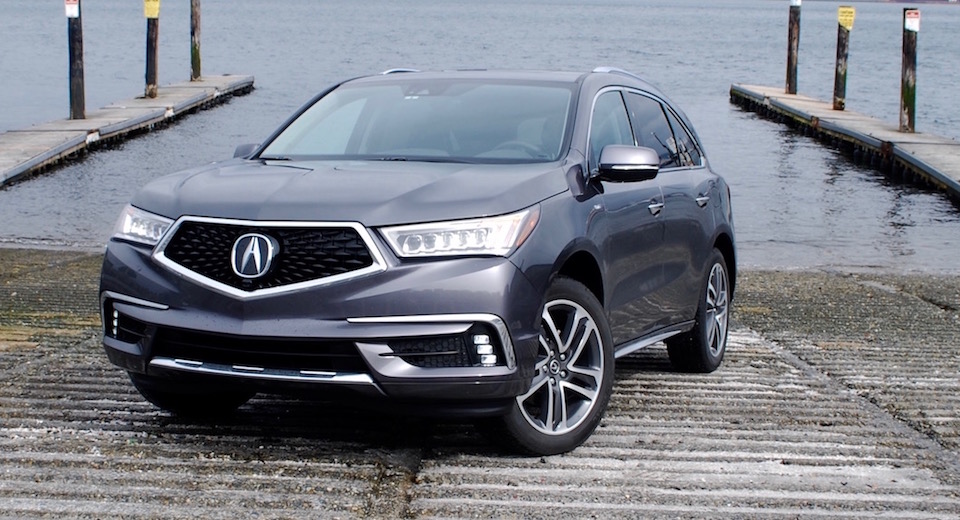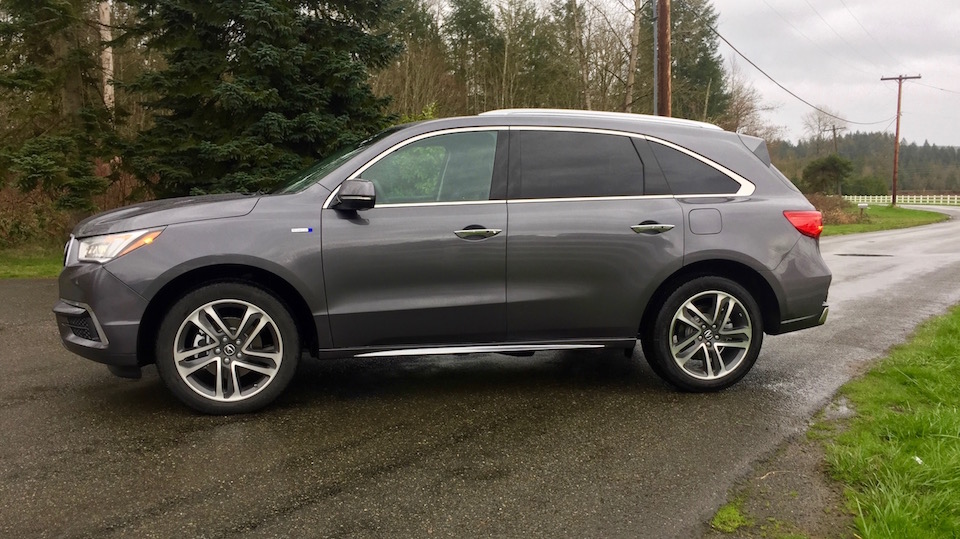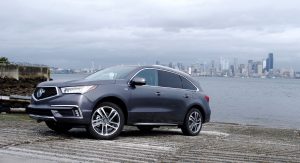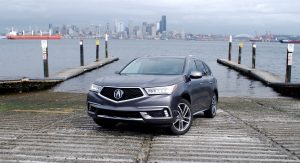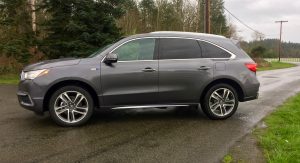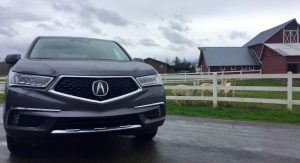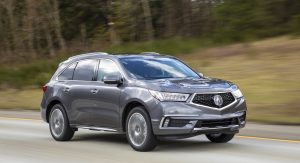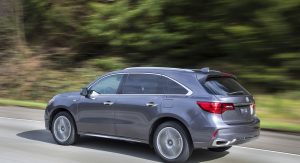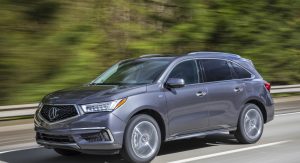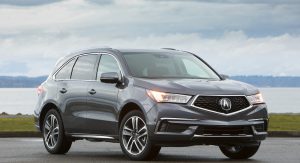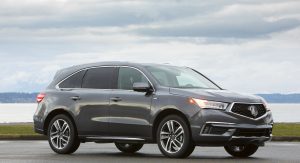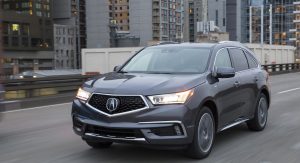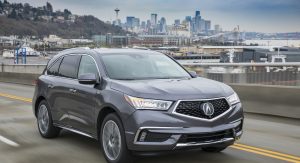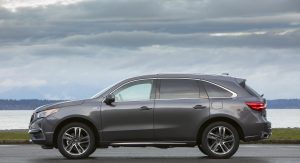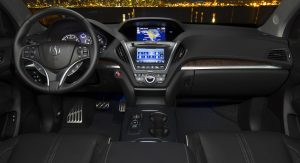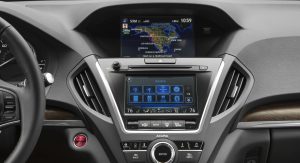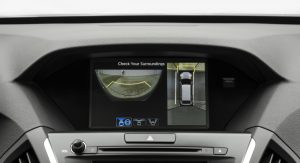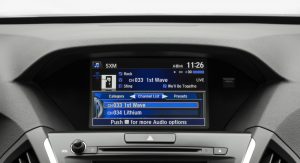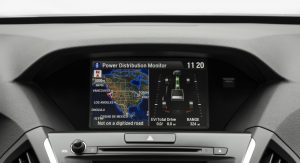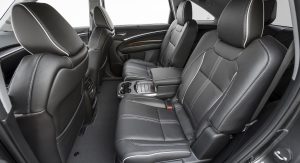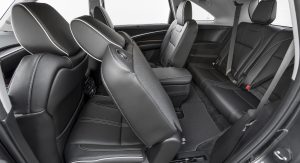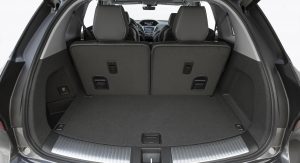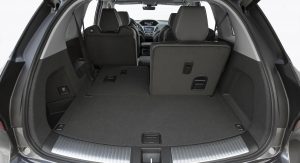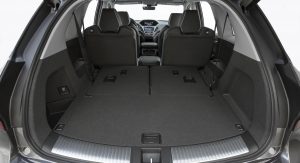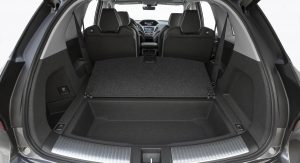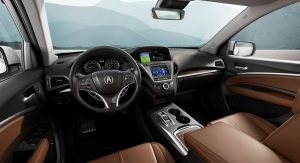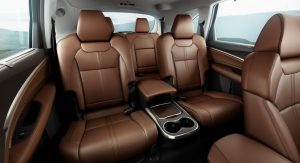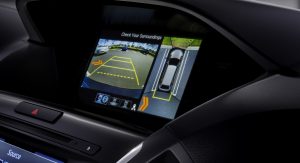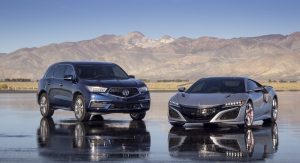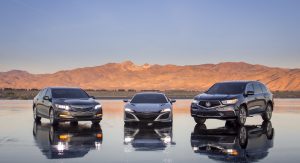If Acura didn’t want to mess with success with the 2017 MDX, then it was mission accomplished.
If it wanted to drum up some more attention to its perennial best-seller, then that’s the job of the 2017 Acura MDX Sport Hybrid – the MDX with the heart of a sports car. OK, maybe some sports car ventricles, but at least it’s an MDX with some added clout and connection to the new NSX. In spicing up the MDX, Acura thinks they’ve managed a trick where increased efficiency is also mated to a boost in performance and thrills from the driver’s seat.
Which wouldn’t hurt the MDX, a nice car short on personality, but high on practicality. Adding in Acura’s slick hybrid system should only make things better. So what’s the catch?
The MDX hybrid is already off to a good start because it uses largely the same powertrain principles Acura has already installed in the RLX Sport Hybrid sedan and the new NSX sports car. I’ve already gushed over the weirdly compelling RLX hybrid, but only managed to sneak in some seat time in the NSX last week near Seattle during the launch event Acura hosted for this MDX.
And civility is the name of the NSX’s game. We got just 15 minutes around city streets, with the speed limit never going above 45 mph. But the NSX is no harder to drive than an RLX, just harder to see out of. And somewhere in all of the settings is the ability to unleash all the power of the twin-turbo’d V6 and three electric motors and all 573 horsepower.
The MDX, naturally, is down on power compared to both the NSX, but also to the RLX because it swaps their 3.5-liter V6 for a 3.0-liter version. Acura officials say that move was made because the MDX hybrid is destined for markets where the 3.0-liter is more tax friendly than the 3.5. So while the RLX musters 377 horsepower, the MDX is down to a combined 321 when the two 36-horsepower electric motors are factored in. That’s still up from 290 in the petrol-only version, though, which is already sufficient in this light-for-this-class vehicle.
A post shared by Zac Estrada (@zacestrada) on Mar 28, 2017 at 4:19pm PDT
Going for the hybrid also means the 9-speed torque converter automatic is swapped out for a 7-speed dual-clutch unit, as in the other Acura hybrids. While it sounds like a downgrade, it so isn’t, thanks to the DCT’s snappier gear changes and less of a habit of hunting up and down the gears. The DCT goes some way into making the case for the “Sport” in “Sport Hybrid.”
The MDX hybrid also gets an active damper setup that’s unavailable on petrol models that’s tied into the driving mode selection along with the steering weight. A new Sport+ setting also sharpens things up more than the most aggressive setting on the standard car, kicking in the V6 at all times rather than as needed in the other modes. But the overall size and comfort mission of the MDX dulls the message somewhat. It’s a secure handler, for sure, but the controls don’t communicate enough to encourage taking the twists fast enough to take advantage of the torque vectoring. While the RLX hybrid is certainly a soft thing to drive, its extra 50-something horses and lower center of gravity still inspired me to tackle corners harder than in the MDX. Those trying to seek out fun in a big SUV must look elsewhere.
But it’s fine the MDX hybrid isn’t the last word in dynamics. Like its sports car sibling, it’s trying to win you over with its civility.
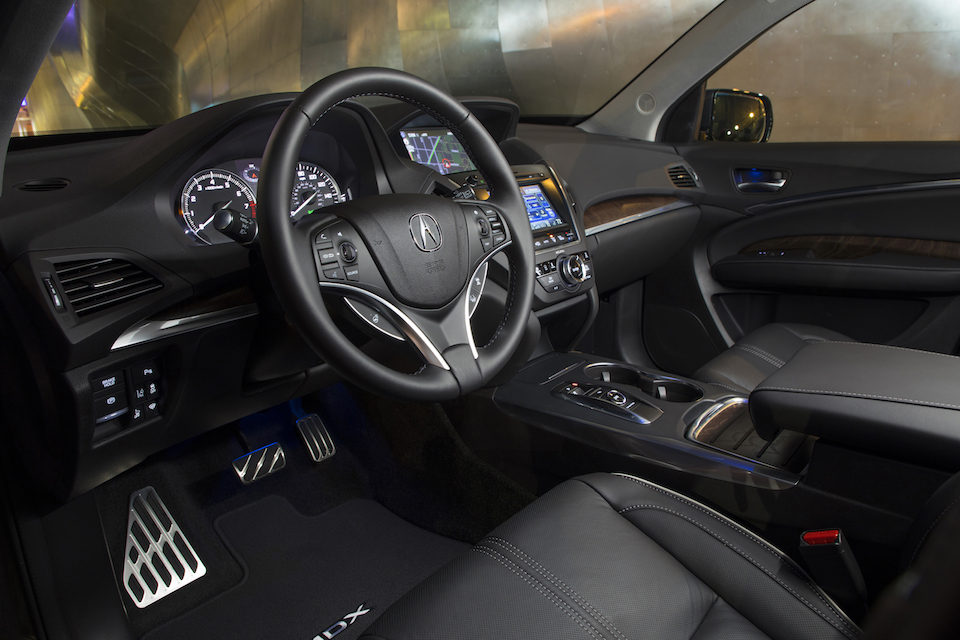
Out of sight, out of mind
Hybrids sometimes have a tricky time being adapted to existing cars because of the packaging compromises they impose. One only needs to open the trunk of a Ford Fusion Hybrid or even the Honda Accord Hybrid to see how the battery hogs space.
That’s tough to pull off convincingly in an SUV, where seat-folding permutations and cargo space are supposed to be selling points.
Given the MDX isn’t a plug-in hybrid, it doesn’t get stuck with the compromises the rivaling BMW X5 xDrive40e (no third-row), Mercedes-Benz GLE550e (absurdly high floor) or Volvo XC90 T8 (small fuel tank) are hit with. All MDX hybrids have three rows of seats and an unencumbered floor. Apart from minor hybrid-specific menus, logos and other blink-or-miss details, it’s just like the standard MDX inside and out.
Which is fine, if unexceptional. As I’ve already gone through in my 2017 MDX review, there’s nothing offensive about the new Acura (even with that controversially large grille), but there’s nothing particularly memorable, either. Against the grays of a typically rainy Seattle day, a gray MDX sort of blends in with everything. The top Advance Package adds some nice interior leather and wood details, but it’s all typically Honda and not significantly nicer than what you might find in a $40,000 Honda Pilot.
Even the hybrid-specific details are sparse, with pretty much only the power flow monitor available to show off to passengers. The Lexus RX 450h and aforementioned Europeans are better in this regard.
But then the MDX hybrid isn’t about showing off your hybrid-ness. Like the RLX, Acura’s hybrid system is so transparent it makes a perfectly good car better by not getting in the way of what makes the car good in the first place.
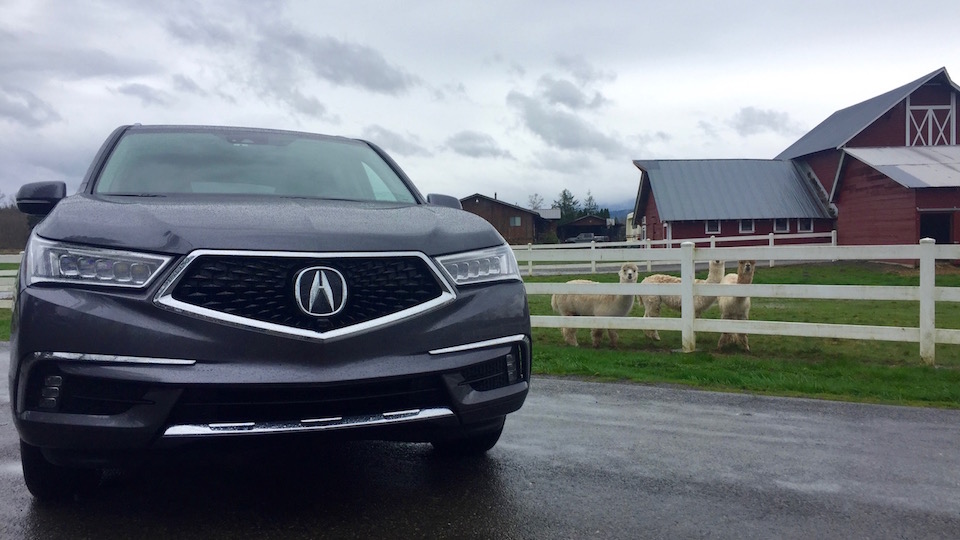
Go hybrid or go home
MDX Sport Hybrids will start at $52,935 when they start hitting U.S. showrooms this month. That’s a $1,500 price bump over the equivalent MDX with all-wheel drive and the Technology Package. Most hybrids, however, will get the all-in Advance pack with the upgraded interior trim, second-row captain’s chairs, surround view camera and heated steering wheel for a grand total of $58,975.
The MDX was already a bit of a screaming deal among luxury three-row SUVs, so the modest price increase of the hybrid version keeps it viable against its rivals. As a ploy to save money on fuel, though, you’re still looking at a 3-4 year payoff versus the petrol MDX, which isn’t that remarkable. At an estimated 26 mpg city and 27 highway, the MDX hybrid doesn’t seem all that efficient unless your commute is particularly congested. As a school shuttle, this might make sense. In a particularly bad day of Seattle traffic, an average of 23-24 mpg on the trip computer looked pretty good compared to the 19-20 I regularly saw when I drove the petrol MDX.
What should sell you on the MDX hybrid over the standard car is its improved behavior when used the way SUVs of this type are. There’s more power in highway situations without the indecisive 9-speed auto, and the ability to make the steering and ride a little more disciplined in the corners. And then you have the added benefit of being able to quietly cruise around at traffic speeds before you step on the accelerator to get a decent burst of electric torque.
The MDX Sport Hybrid asks for very little in exchange for what it adds to an already immensely competent package. Its torquey nature manages to mask some of the more unexceptional parts of the MDX to make an easy-to-live-with SUV even easier to like.
Photos: Zac Estrada/Carscoops and Acura



